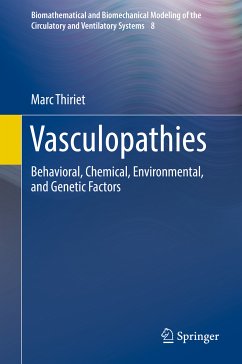
Biological Responses to Nanoscale Particles (eBook, PDF)
Molecular and Cellular Aspects and Methodological Approaches
Redaktion: Gehr, Peter; Zellner, Reinhard
Versandkostenfrei!
Sofort per Download lieferbar
72,95 €
inkl. MwSt.
Weitere Ausgaben:

PAYBACK Punkte
36 °P sammeln!
In this book the recent progress accumulated in studies of the interaction of engineered nanoparticles with cells and cellular constituents is presented. The focus is on manufacturing and characterization of nanosized materials, their interactions with biological molecules such as proteins, the mechanisms of transport across biological membranes as well as their effects on biological functions. Fundamental molecular and cellular aspects are in the foreground of the book. A further particularity is the interdisciplinary approach, including fields such as preparatory and analytical chemistry, bi...
In this book the recent progress accumulated in studies of the interaction of engineered nanoparticles with cells and cellular constituents is presented. The focus is on manufacturing and characterization of nanosized materials, their interactions with biological molecules such as proteins, the mechanisms of transport across biological membranes as well as their effects on biological functions. Fundamental molecular and cellular aspects are in the foreground of the book. A further particularity is the interdisciplinary approach, including fields such as preparatory and analytical chemistry, biophysics and the physics of colloids, advanced microscopy and spectroscopy for in-situ detection of nanoparticles, cellular toxicology and nanomedicine.
Nanoscale particles are known to exhibit novel and unprecedented properties that make them different from their corresponding bulk materials. As our ability to control these properties is further advanced, a huge potential to create materials with novel properties and applications emerges. Although the technological and economic benefits of nanomaterials are indisputable, concerns have also been raised that nanoscale structuring of materials might also induce negative health effects. Unfortunately, such negative health effects cannot be deduced from the known toxicity of the corresponding macroscopic material. As a result, there is a major gap in the knowledge necessary for assessing their risk to human health.
Nanoscale particles are known to exhibit novel and unprecedented properties that make them different from their corresponding bulk materials. As our ability to control these properties is further advanced, a huge potential to create materials with novel properties and applications emerges. Although the technological and economic benefits of nanomaterials are indisputable, concerns have also been raised that nanoscale structuring of materials might also induce negative health effects. Unfortunately, such negative health effects cannot be deduced from the known toxicity of the corresponding macroscopic material. As a result, there is a major gap in the knowledge necessary for assessing their risk to human health.
Dieser Download kann aus rechtlichen Gründen nur mit Rechnungsadresse in A, B, BG, CY, CZ, D, DK, EW, E, FIN, F, GR, HR, H, IRL, I, LT, L, LR, M, NL, PL, P, R, S, SLO, SK ausgeliefert werden.












